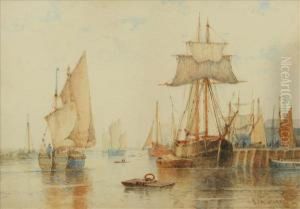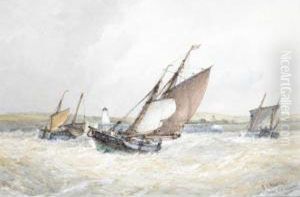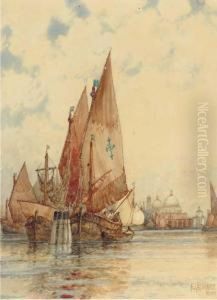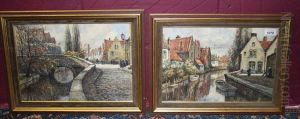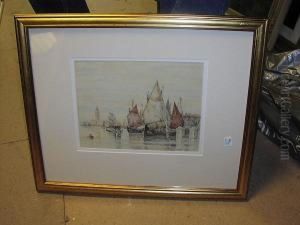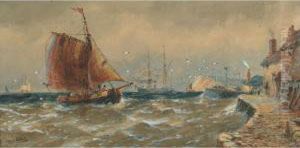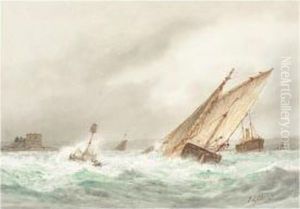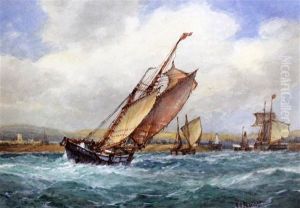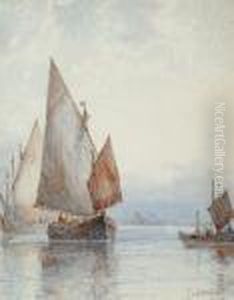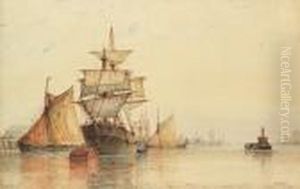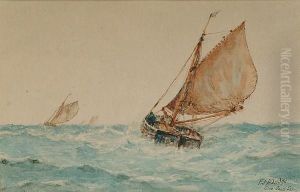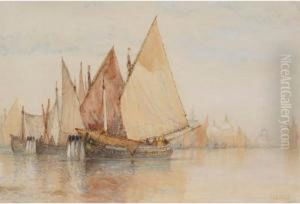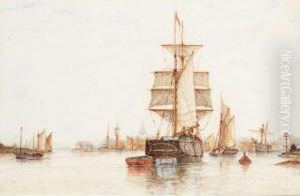Frederick James Aldridge Paintings
Frederick James Aldridge was a British painter known for his marine and coastal scenes. Born in 1850 in Worcester, England, Aldridge developed a strong affinity for the sea and sailing ships at a young age. This passion is evident in his works, which often depict bustling ports, serene coastal villages, and ships braving the elements.
Aldridge's artistic journey began with his education in the arts, where he honed his skills in watercolor painting—a medium in which he would come to excel. He was particularly influenced by the maritime scenes of the 17th-century Dutch Golden Age painters and the British marine artist J.M.W. Turner, whose work would leave a lasting impression on Aldridge's own style.
Throughout his career, Aldridge exhibited his paintings widely, including at prestigious institutions such as the Royal Academy in London. His works became known for their attention to detail, vibrant color palette, and ability to capture the mood of the sea. Aldridge's paintings were not only aesthetically pleasing but also historically accurate, as he took great care to depict the various types of sailing vessels with precision.
Despite his focus on marine subjects, Aldridge also produced landscapes and city scenes, although these are less well-known. His dedication to maritime art earned him a significant following during his lifetime, and today his works are collected by those who appreciate traditional marine art and the history of sailing.
Frederick James Aldridge continued to paint until his later years, remaining active in the art community. He passed away in 1933, leaving behind a rich legacy of artwork that continues to be admired for its beauty and historical value. Aldridge's contribution to marine painting has ensured his place in the annals of British art history.












